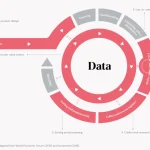
Ever wondered why some teams just click while others stumble? Turns out, the answer might be in their brains—literally. Neuroleadership, the intersection of neuroscience and leadership, is changing how we understand team dynamics. And honestly? It’s about time.
What Is Neuroleadership, Anyway?
Neuroleadership isn’t some buzzword cooked up in a boardroom. It’s a research-backed approach that uses brain science to optimize leadership strategies. Think of it like tuning a guitar—except instead of strings, you’re fine-tuning decision-making, emotional regulation, and collaboration.
At its core, neuroleadership focuses on four key areas:
- Decision-making: How the brain weighs risks and rewards.
- Emotional regulation: Managing stress and fostering resilience.
- Collaboration: The neuroscience of trust and teamwork.
- Change management: Why our brains resist—or embrace—change.
Why Your Brain Hates Traditional Leadership
Here’s the deal: the human brain didn’t evolve for PowerPoint slides or quarterly reviews. It’s wired for survival, which means it craves safety, clarity, and connection. Traditional top-down leadership? Often triggers threat responses—like a caveman spotting a saber-toothed tiger.
Neuroleadership flips the script by:
- Reducing uncertainty (the brain’s kryptonite).
- Encouraging psychological safety—so teams don’t feel like they’re walking on eggshells.
- Leveraging dopamine hits from small wins to fuel motivation.
The SCARF Model: A Brain-Friendly Framework
David Rock’s SCARF model is neuroleadership’s secret sauce. It breaks down five social drivers that light up—or shut down—our brains:
| Status | Our perceived importance relative to others. |
| Certainty | Predictability = brain comfort. |
| Autonomy | Control over choices = lower stress. |
| Relatedness | Feeling connected to the tribe. |
| Fairness | Equity keeps the amygdala calm. |
Mess with these, and you’re basically poking the brain’s panic button. Nail them? You’ve got a team firing on all cylinders.
Practical Neuroleadership Tactics for Teams
Enough theory—let’s talk action. Here’s how to apply neuroleadership without turning your office into a lab:
1. Ditch the Feedback Sandwich
The old “compliment-criticism-compliment” trick? The brain sees right through it. Instead, try “feedforward”—focusing on future improvements. Less threat, more growth.
2. Hack the Meeting Blues
Ever noticed how post-lunch meetings feel like wading through molasses? Blame the brain’s circadian rhythm. Try:
- 10-minute stand-ups instead of hour-long marathons.
- Scheduling creative work for mornings (when the prefrontal cortex is fresh).
- Walking meetings—movement boosts idea generation.
3. Celebrate Micro-Wins
The brain loves progress—even tiny wins release dopamine. Did someone solve a bug? Nail a client call? Acknowledge it. It’s like giving your team’s motivation a shot of espresso.
The Future of Neuroleadership
As remote work blurs boundaries and burnout climbs, neuroleadership isn’t just nice-to-have—it’s survival. Companies like Google and Microsoft already use brain-based strategies to build resilient teams. The question isn’t if this science will reshape leadership, but how fast.
So here’s a thought: What if the best leaders aren’t just decision-makers… but brain architects?








